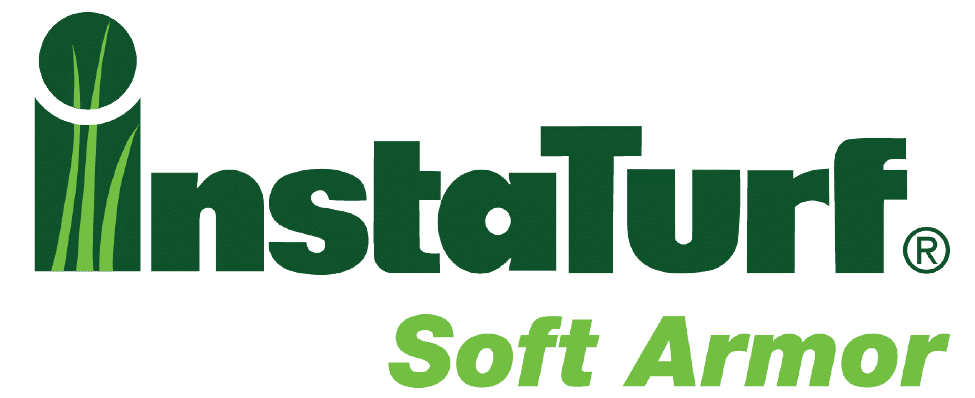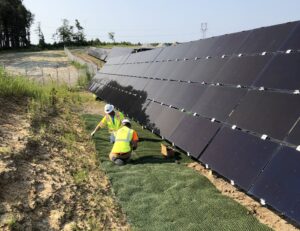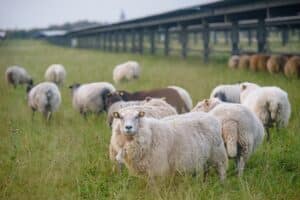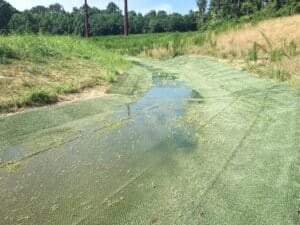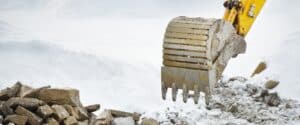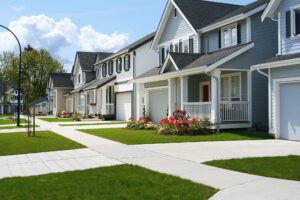Before the advent of turf reinforcement mats (TRMs) in the early 1970s, using “hard armor” materials such as rock riprap and concrete were the standard practice for permanently stabilizing high flow drainage channels, outfall areas, river banks, and shorelines against erosion. Today, more and more engineers and designers are looking for erosion control products that are softer, more aesthetically pleasing, and environmentally friendly alternatives to hard armor materials.
As the recognition of TRM capabilities for substantially increasing the erosion resistance of natural vegetation continues to grow, so has the use of “reinforced” vegetation in place of rock and concrete. However, both “hard armor” and vegetative “soft armor” materials have their useful application niches and performance limits. This article will discuss some of the basic advantages and disadvantages of each form of erosion “armoring.”
Overview of Turf Reinforcement Mats (TRMs)
A highly effective turf reinforcement mat is more than what it sounds like. Effective turf reinforcement mats must not only permanently reinforce vegetation against erosive forces, but they must also provide a high level of erosion protection even before vegetation establishment. Turf reinforcement mats are relatively thick structures (minimum ¼ inch) comprised of non-degradable, UV resistant, geosynthetic materials (such as polyethylene). The structures are usually comprised of synthetic nets, filaments, or wire mesh that provide soil protection and reinforcement for established plants.
Some TRMs are entirely synthetic, while others have a synthetic framework incorporated with organic fibers. Regardless of TRM construction, their purpose as erosion control products is to provide permanent erosion protection and slope stabilization in conjunction with natural vegetation. By structurally reinforcing plant stems and roots and protecting the soil that plants are anchored into, TRMs can increase the erosion resistance of vegetation up to that of very large rock riprap and other hard armor materials. However, TRMs do have their potential drawbacks. Obviously, they require vegetation establishment for long-term functionality. If an application area is not conducive to growing and sustaining vegetation, then non-vegetative hard armor alternatives are likely the best solution.
Furthermore, conventional stitched and woven TRMs provide limited erosion protection before vegetation is established and during vegetation establishment. Starting out with relatively low unvegetated permissible shear stress ratings of 2 – 3 lbs/sf (per ASTM D6460), conventional TRMs pose a considerable risk for failure before vegetation establishment. Once fully vegetated, typical permissible shear stress for these products increases to 12 lbs/sf or more, which is in line with 30-inch and greater diameter rock riprap.
That said, the new InstaTurf ShearForce10 ECTRM from GrassWorx substantially reduces the risk of pre-vegetated failure with an ASTM D6460 unvegetated permissible shear stress rating of 12 lbs/sf, from the very first day of installation. This level of immediate erosion protection is equivalent to that of fully vegetated conventional TRMs and 30-inch rock riprap. (See Table 1. For typical permissible shear stress ratings of unreinforced vegetation, TRMs, and rock riprap).
Using Turf Reinforcement Mats Instead of Hard Armor
As mentioned, rock riprap and other hard armor materials are often the only options in areas that won’t support long term vegetation growth. However, with the long list of benefits that vegetation provides vs. hard armor materials, it’s usually desirable to use as much vegetation, and as little hard armor as possible for site stabilization. To do so in high flow areas where expected flow-induced shear forces will exceed the limits of natural vegetation, TRMs must be employed.
Turf reinforcement mats (TRMs) seem like the ideal soil erosion control alternative to rock and concrete. They can tackle the long term protection against erosive attacks, as well as the problems that come with hard armor solutions. However, conventional TRMs cannot provide the immediate erosion protection you get from hard armor, and may not reach their maximum effectiveness for 6 to 12 months after installation, or even longer. To avoid the potential risk of pre-vegetated failures, a lot of engineers and designers in the past have relied upon hard armor, even in areas that would support good vegetation growth, and despite hard armor’s numerous short term and long term disadvantages.
With the recent introduction of the InstaTurf ShearForce high flow erosion control products, such risk-averse design professionals can now confidently specify turf reinforcement mats and glean the benefits of softer, vegetative armoring. The InstaTurf ShearForce products are considered a Hybrid Vegetative Armoring System, with simulated turf that protects, establishes, and permanently reinforces natural vegetation. These products deliver a much more aesthetically pleasing solution to hard armor while not sacrificing immediate or long term functionality.
Benefits of TRM-Reinforced Vegetation Over Hard Armor
- Typically less than half the cost of rock riprap, and 25% the cost of concrete
- Much easier to transport and install with no heavy equipment required
- Maintained with standard mowing equipment for easier long term maintenance
- Less hazardous along roadways and pedestrian areas
- Increased stormwater filtration/infiltration
- Aesthetically pleasing/Environmentally friendly/ecologically functional
Cost-Effective
While the costs of rock and concrete from project to project can vary dramatically based on site location and distance from the rock quarry or cement plant, these materials are typically quite expensive. Large projects will likely spend a tremendous amount of money on hard armor materials. The good news here is that turf reinforcement mats can help extend the use of vegetation and limit the amount of rock and concrete used on projects for effective erosion control. TRMs with immediate rock-like armoring capabilities, such as the ShearForce10 ECTRM, are especially adept at replacing hard armor, and typically lower an application’s installed costs by 50% or more, which can add up to significant project savings.
Simple Transportation and Installation
Some of the major drawbacks with hard armor materials often involve transportation and installation. Rock and concrete require the use of heavy equipment for transportation, over-excavation, and placement. In some areas with limited access, or established residential and commercial developments, the use of large dump trucks, concrete mixers, and excavators may not be economically feasible or desirable. TRMs, on the other hand, can be transported with small passenger trucks and hauled by less intrusive means into remote sites or through neighborhoods. Furthermore, the actual installation of TRMs is usually done manually. It requires no heavy equipment, though often, a small tractor with soil preparation implements will be used prior to seeding and mat installation.
Easy Long-Term Maintenance
Once a turf reinforcement mat is installed, and vegetation is established, it can easily be maintained with standard mowing equipment. Many people think rock riprap and concrete are “maintenance-free.” However, rock tends to vegetate over time, often with weeds and other undesirable plants, which usually must be controlled by spraying or more manual, labor-intensive means. Furthermore, rock linings are often bordered by grass that is mowed regularly. Mowing too close to the rock can be dangerous and will often require manually weed eating around the edges. Poured concrete linings, though initially maintenance-free, are inflexible and inadvertently crack over time. When this happens, water can easily encroach and begin flowing under the concrete lining, causing water erosion and further deteriorating its integrity and eventually leading to complete failure.
A Safer Solution
Another reason to consider turf reinforcement mats over hard armor is safety. Hard armor can be a hazard when placed along roadways, job sites, and pedestrian paths. Accidents in such areas can lead to injury or even death. While turf reinforcement mats cannot prevent accidents from occurring, the smoother, softer surface of TRM-reinforced vegetation is much easier to walk on or drive across safely than the rough and hard surface of rock riprap.
Better Looking, More Environmentally Friendly Solution
Initially, domestically produced turf reinforcement mats will have a considerably smaller carbon footprint than installed rock and concrete. Once vegetated, the vegetation offers a whole slew of environmental and aesthetic benefits, including atmospheric carbon and water pollutant sequestration, increased water infiltration, and ecological functionality. On the other hand, hard armor materials exposed to sunlight also act as a heat sink, which can increase local ambient temperatures as well as the water temperature in streams, river banks, and lakes.
If you’re interested in using more vegetation and less hard armor materials on your projects, but don’t want the initial risk associated with conventional TRMs, then you should seriously consider the InstaTurf ShearForce products. Visit www.insta-turf.com for more information.
